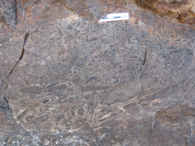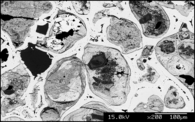Phosphates
Specific tasks: Precambrian-Cambrian phosphate deposits, ocean chemistry and the evolution of life
The Precambrian-Cambrian boundary comprises an episode of major environmental changes, which are believed to be relevant for the most prominent bioradiation in Earth’s history: from an ocean in which algae and microbes were the dominant form of life, to one in which siginificant skelton-forming higher life spread.
Concomitant with these changes is the onset of biomineralization and widespread phosphogenesis (i.e. authigenic phosphate deposition), the latter phenomena not yet fully understood. Our research therefore focuses on the facial, mineralogical and geochemical analyses of well-preserved Precambrian-Cambrian phosphate deposits from Central and South Asia (e.g. China, Kazakhstan, India).
Contact: Dorothee Hippler


